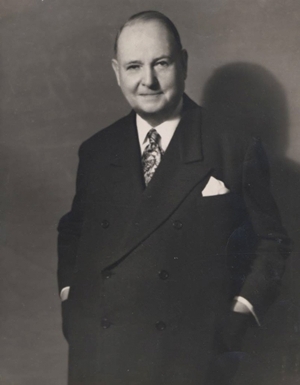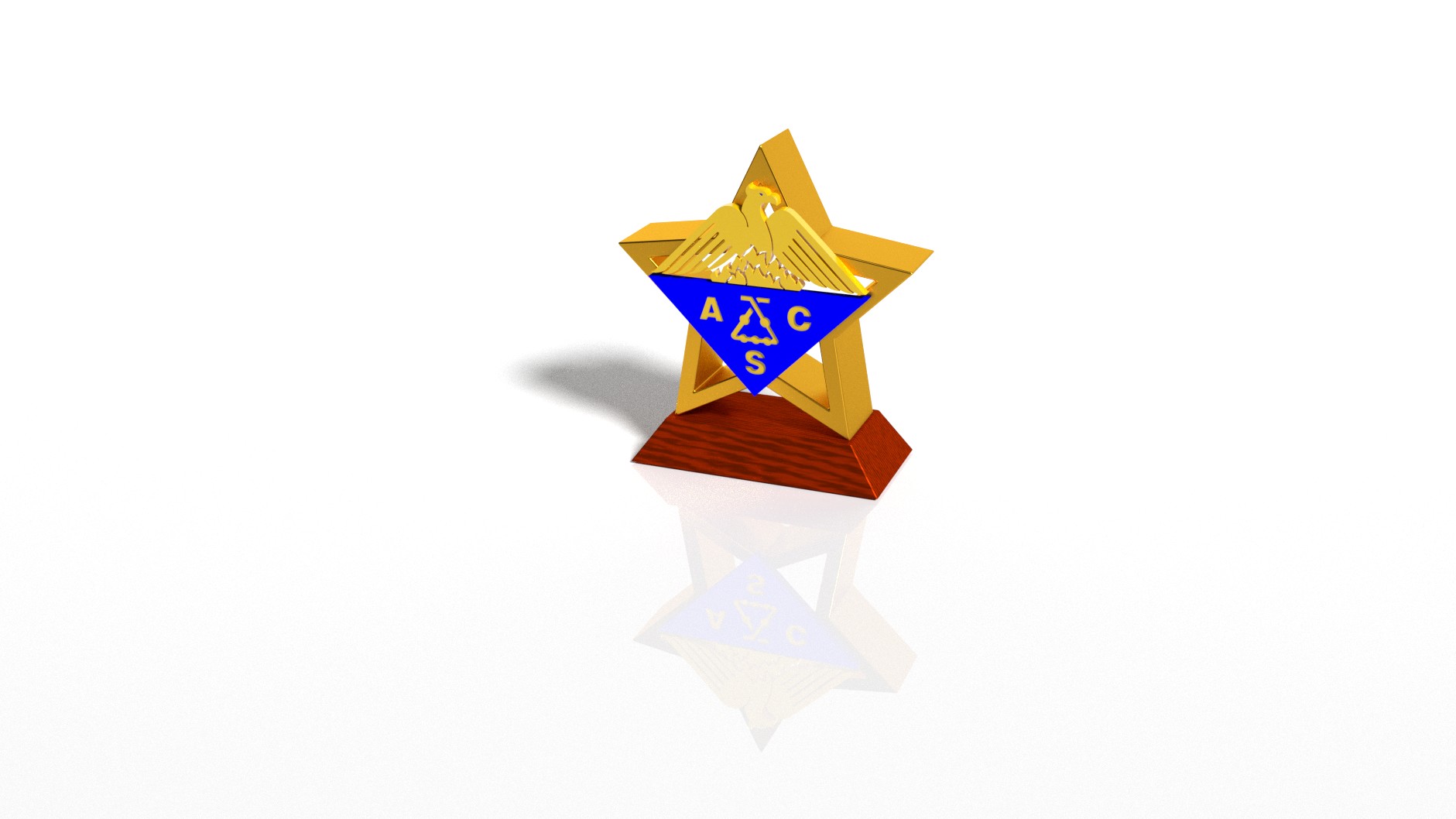William J. Hale
By Robert Kohrman

Without doubt, the creation of the Midland Section of the ACS was primarily due to the vision and perseverance of William Jay “Billy” Hale. While it was inevitable that the burgeoning local chemical industry ultimately would encourage the formation of an ACS section in Midland, it was Hale’s foresight and influence with H.H. Dow that made it happen in 1919.
W.J. Hale was born on January 5, 1876. He received his A.B. and M.A. degrees from Miami University in Oxford, Ohio, in 1897 and later received an honorary doctorate from that institution in 1937. Following his early training at Miami, he moved on to Harvard where he obtained another A.B. degree in 1898, an A.M. in 1899, and his Ph.D. degree in 1902. His first scientific publication from Harvard was in collaboration with Henry B. Hill and was entitled “Notizuber2-phenyl-4-nitrophenol” published in Berichte, 1900, 33, 1241-2.
After post-doctoral experiences at the University of Gottingen and Berlin’s Technische Hochschule, he went to the University of Michigan in 1904 where he joined the chemistry faculty as an instructor. Hale was the 38th faculty member to join the chemical laboratories in Ann Arbor.
While in Ann Arbor, Hale was responsible for supervising the publication of E.D. Campbell’s History of the Chemical Laboratory of the University of Michigan, which was published in 1916. He also produced many publications resulting from original investigations into Grignard reactions, condensation reactions, and structure determinations of numerous compounds. Hale wrote several textbooks, including The Calculations of General Chemistry, which was published in three editions, as well as a book of laboratory experiments which was translated into Russian.
Helen Dow, H.H. Dow’s eldest daughter, took chemistry at the University of Michigan from William J. Hale. Shortly thereafter, William and Helen were married in February 1917; but, tragically, their marriage lasted a little less than two years as she died in late 1918 from influenza.
However, this marriage was fortuitous because Hale’s relationship with his father-in-law was instrumental in causing H.H. Dow to realize that the workforce at The Dow Chemical Company was deficient in personnel trained in organic chemistry. During the summer of 1918, Dr. Hale was asked to present a series of lectures on organic chemistry over a period of five weeks. Later, Hale took some delight in noting that in 1915, the Rochester Section of the ACS had formally invited him to address their group on organic chemistry, but had rescinded the invitation because such a subject would be too advanced for the greater portion of their members who were from Eastman Kodak.
H.H. Dow, along with about 30 others, participated in this short course and, at its conclusion, became convinced that the company must become more involved in this branch of chemistry. He asked W.J. Hale to come to Dow and organize an organic research laboratory. After arriving in Midland, it became increasingly clear to Hale that the local environment was lacking in the kind of intellectual stimulation he had enjoyed in Ann Arbor. According to Karpiuk’s Dow Research Pioneers, Dr. Hale equated Midland to “. . a desert of scientific discussion.” In that reference, Hale is further quoted on this subject:
“I began to sense a wanting in whatever prowess I may have enjoyed in disputation and dialectic. It behooved me to institute some sort of forum. To this end I reasoned that if we could get our chemists assembled from time to time to hear an outside speaker we might stir up keener interest in life and encourage argumentative discourse. Within a few months we had organized a group of some 20 or more chemists into what was called the Midland Section of the American Chemical Society.”
After the hand-written name of The Dow Chemical Company (perhaps penned by H.H. Dow), the signature of William J. Hale was the first to appear on the petition to the national organization of the ACS for permission to charter a section in Midland, Michigan.
The charter was granted on December 8, 1919, and at the first official meeting of the section convened by William J. Hale as temporary chairman, he was elected the first councilor of the Midland Section. He remained in that post for fourteen consecutive years until E.C. Britton replaced him in 1932.
Providing impetus for the organization of the Midland Section of the ACS was not the only action Hale undertook to make the Midland environment more worldly. He recognized that a proper research environment required a high quality research library. He noted that the only chemistry books in H.H. Dow’s home were copies of Roscoe and Shorlemmer, Treatise on Chemistry (1892) and Thorpe’s Dictionary of Chemistry (1918). At the plant there were practically no books whatsoever, although he later remembered several badly mutilated and scorched volumes from Beilstein. He persuaded H.H. Dow to request $10,000 from the Board of Directors to start the library and over a five-year period pulled together the resources to create an outstanding chemical library. He created the first library at The Dow Chemical Company in a room 20 x 40 feet in the northwest corner of the Educational Building. He regarded his efforts of library creation as proof that early chemists and chemical engineers were in great need of the knowledge of science and had very little background in the greatest of all sciences – organic chemistry.
His early efforts to bring scientific knowledge to the desert of Midland appear to be typical of this visionary chemist. In a 1945 talk entitled “The Sky is the Limit,” he predicted three great industries of the future. Industry No. 1 was predicted to be Alcohol Motor Fuel. He stated, “. . . there is no better fuel for internal combustion motors than alcohol and water. Its octane rating is far above 100. It burns without knock . . . And far above all else alcohol burns to complete oxidation and thus eliminates discharge into the atmosphere from the exhaust.”
Industry No. 2 was seen to be Plastics from the Soil. He saw ” . . . the great field of carbohydrates and vegetable oils . . . [producing] a vast range of derivatives such as the esters of cellulose, . . .ethers of cellulose (Ethocel*, Methocel*) and hundreds of others. . . . Cultivation of oil producing seeds promises to be one of the most interesting chemurgic activities. . . . Lamination of plastics, either along or with metal film, is leading to remarkably strong structures.”
Industry No. 3 was Light Metals. Hale speculated that by 1980 there would be an annual production of 10 billion pounds of both aluminum and magnesium. He hoped that, utilizing light metal construction of 250 pounds/passenger, a transcontinental train could be constructed which would bring New York City and Los Angeles within 10 hours of one another!
William Hale’s career at Dow was marked by many accomplishments. He served as director of Organic Chemistry Research until 1934, after which he served as a research consultant. He authored or co-authored over 30 patents. Subsequent to the textbooks he published at the University of Michigan, he authored the books Chemistry Triumphant and other works involving chemurgy, such as The Farm Chemurge, Prosperity Beckons, Farmer Victorious, and Chemvision.
These chemurgic works reflected his long-standing commitment to the use of farm carbohydrates as industrial feedstocks for plastics, paints, gasohol, and other commercially viable products. He even developed a chlorophyll-based chewing gum which he gave away to children during Halloween.
In addition to his work with the ACS, Hale was a permanent member of the National Research Council and chairman of the chemistry and chemical technology division during 1925-7. He received the Garvan Cup in 1938.
After taking the leadership role in organic chemical research at Dow, Hale was instrumental in hiring Edgar D. Britton from the staff at University of Michigan in 1922. E.C. Britton had been one of his former students in Ann Arbor. According to D. Whitehead in The Dow Story, in advising Britton about the transition from academic to industrial life, Hale noted that,
” . . . the real chemists soon get over that obsolete three months summer vacation idea. That scheme works all right possibly for those who are unaccustomed to real work, but I can’t imagine a real live grown-up man desiring seriously to follow the custom. It really is detrimental to your development as a chemist, let alone the harmful effect it has upon your associates among the living.”
E.C. Britton was not deterred by this admonition and together, in 1922, Hale and Britton perfected much of the high-pressure, high-temperature chemistry involved in the conversion of chlorobenzene to phenol by the reaction of the former with caustic soda. The sensational success of this reaction was due, in part, to the use of starting materials common to the The Dow Chemical Company, and to the marketing of the phenolic by-products as Dowicide*, a series of germicides, fungicides, and insecticides; and the diphenyloxide by-product as Dowtherm*, a heat-transfer fluid.
His collaboration with E.C. Britton continued into their ACS activities. Not only did Britton become the first two-term chair of the Midland Section from 1928-1930, but after Hale stepped down as the section councilor in 1932, E.C. Britton became a councilor for the section for the next sixteen years until 1948. Later, in 1952, Britton became the president of the national ACS, the only member of the Midland Section to achieve that high office.
The inspiration of William J. Hale provided the catalyst which encouraged H.H. Dow to move his company into organic chemistry and to build one of the nation’s leading scientific, industrial libraries. In like fashion, it was Hale’s enthusiasm and vision which brought the American Chemical Society to Midland and encouraged outstanding colleagues such as E.C. Britton to combine their scientific talents and professional responsibilities to lead the Midland Section for the years to come.
*Trademark of The Dow Chemical Company







